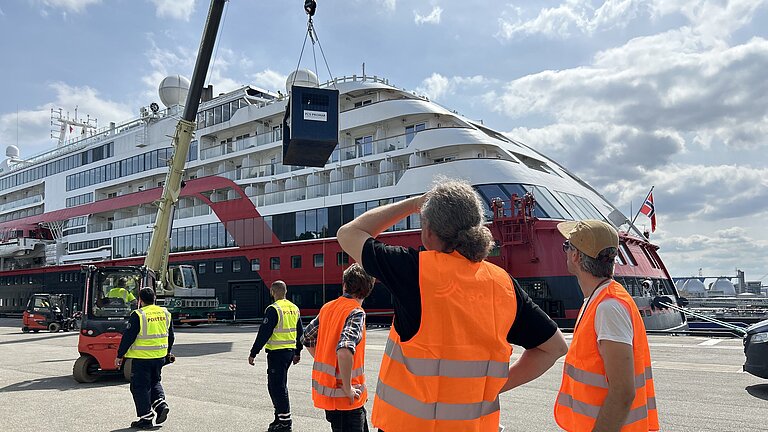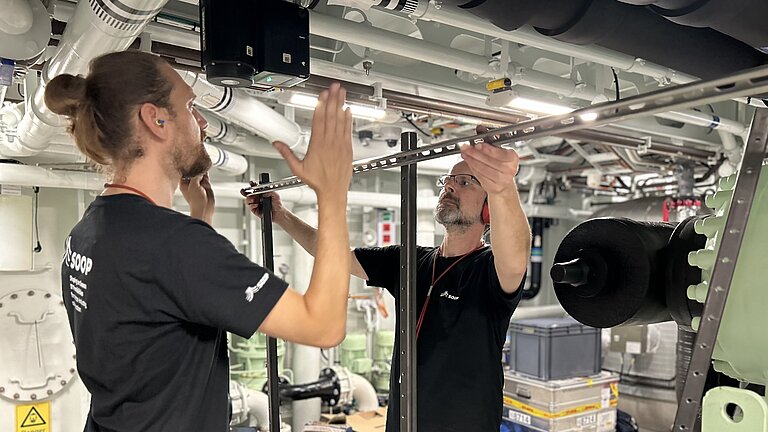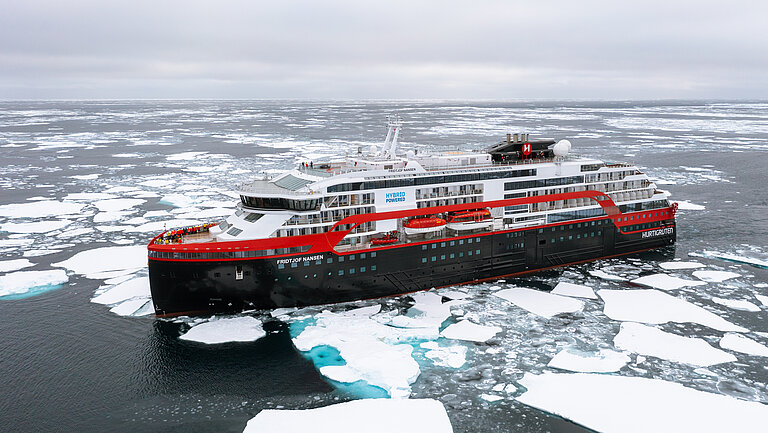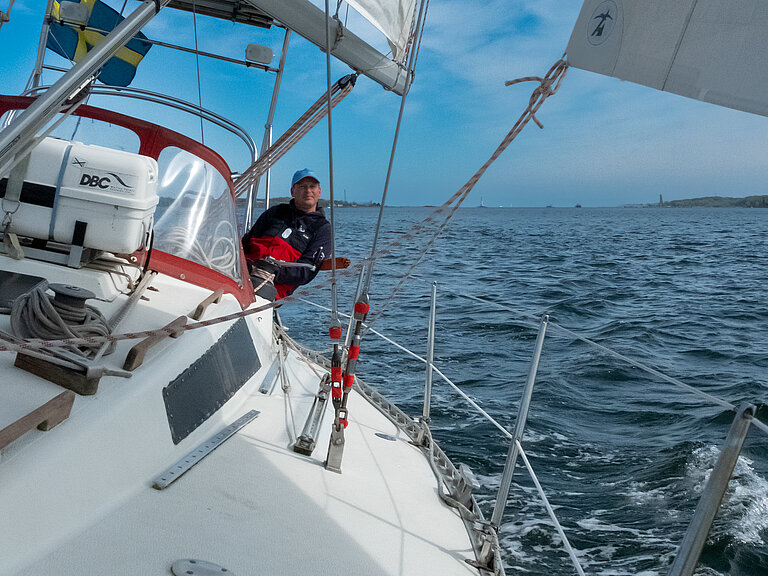GEOMAR Helmholtz Centre for Ocean Research Kiel
Wischhofstr. 1-3
24148 Kiel
GERMANY
Media requests: media(at)geomar.de
Events and all other topics: outreach(at)geomar.de
The goal of the Innovation Platform “Shaping an Ocean Of Possibilities for science-industry collaboration” (SOOP) is to establish sustainable structures and technologies for ocean observation, to improve access to measurement data and to expand knowledge about our oceans. To achieve this, the GEOMAR Helmholtz Centre for Ocean Research Kiel, the Alfred Wegener Institute, Helmholtz Centre for Polar and Marine Research (AWI), and the Helmholtz Centre Hereon are promoting a joint effort of participants from industry, civil society, and science. One idea is to conduct scientific research not only from research vessels but also from cruise ships or merchant ships, to increase the available amount of research data.
Cooperation with Expedition Cruise Company
SOOP has recently initiated a cooperation with HX (Hurtigruten Expeditions). Within a joint effort, scientific data will be collected from a commercial cruise ship. The collaboration started in the port of Hamburg, where measuring instruments were installed on board of MS FRIDTJOF NANSEN. From there, on Saturday, the ship set sail for Reykjavik. During its journey, which passes Norway as well as the Shetland and the Faroe Islands, data for research purposes will be collected. The cruise has been joined by Melf Paulsen, a research engineer from the Chemical Oceanography research unit at GEOMAR. He will not only install and monitor the measuring instruments but also introduce guests of the cruise to his work through lectures.
On the following eight expeditions of the MS FRIDTJOF NANSEN, scientists from the three research institutes GEOMAR, AWI, and Hereon will take turns collecting data on board and sharing their knowledge with guests. Measurements will cover temperature and oxygen content of the water, as well as salinity, microplastics and CO2 content. In addition, experiments will be conducted to investigate the biological diversity in the waters using measurements of phytoplankton and of traces of genetic material in the water (eDNA).
New Strategies for Broad Data Collection
“We are developing easy-to-use instruments that allow us to leave the familiar and proven environment of scientific research vessels,” says Dr Toste Tanhua, chemical oceanographer at GEOMAR and coordinator of SOOP. “In addition, we need uniform standards for data and analyses in order to collect sufficient information about our ocean in all regions.” Working with HX could help to develop new and sustainable strategies for easier and more comprehensive data collection from non-scientific vessels and marine infrastructure, to complement the indispensable research vessel expeditions.
Hurtigruten Expeditions has been undertaking expeditions to the most remote places on earth since 1896. In 2018, HX established partnerships with some of the world's leading scientific institutions as part of its “Science and Education” program. The expedition cruise provider supports scientific projects by providing researchers with on-board accommodation. Travelers have the opportunity to collect data for research purposes as part of citizen science programs.
“Our expedition sea voyages on the MS FRIDTJOF NANSEN will now help fill important data gaps,” says Dr Verena Meraldi, scientific director at HX Hurtigruten Expeditions. “This can contribute to a better understanding of the conditions in sparsely travelled regions, and our guests have the extraordinary opportunity to gain a direct insight into ongoing research".
SOOP Background:
The Helmholtz Innovation Platform SOOP – “Shaping an Ocean Of Possibilities” is funded with a grant of €11 million from the Pact for Research and Innovation. Three Helmholtz centres are jointly working on establishing sustainable marine observation structures in the growing market of the New Blue Economy. The aim is to create collaborations between science and industry in the field of marine technology and services and to come up with concrete innovations which will quickly and flexibly be available to the economy and society.

The first scientific measurement technology was brought on board the expedition cruise ship MS FRIDTJOF NANSEN in the port of Hamburg. This marks the start of the co-operation between HX Hurtigruten Expeditions and the SOOP innovation platform. Photo: Myriam Dutzi, SOOP

Dr Tobias Steinhoff (right) and research engineer Melf Paulsen begin installing the SOOP measurement technology on board. This will be used to measure the oxygen and carbon dioxide content of the water and microplastics, among other things, during the voyages. Photo: Myriam Dutzi, SOOP

MS FRIDTJOF NANSEN also visits less frequented marine regions: In the future, the expedition cruise ship will have measuring technology on board and collect data for science. Photo: Espen Mills, HX Hurtigruten Expeditions

Dr Toste Tanhua, chemical oceanographer at GEOMAR and passionate sailor, coordinates the innovation platform SOOP (Shaping an Ocean of Possibilities). Photo: Jens Klimmeck

